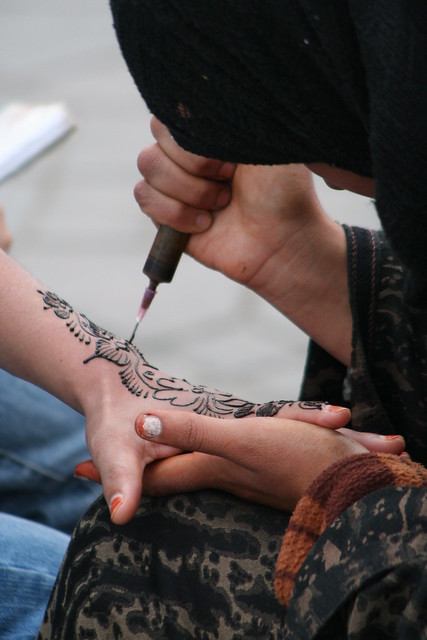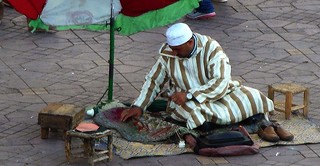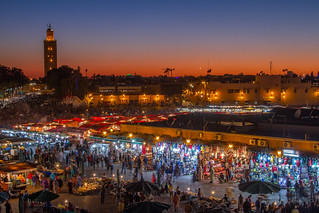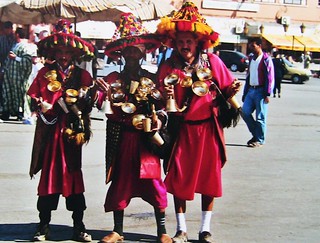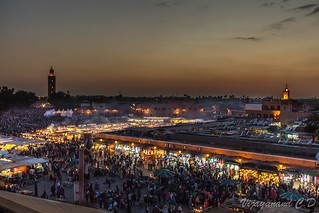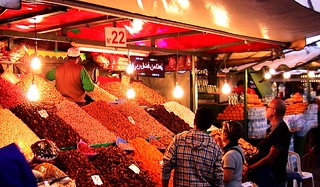In 2008, Marrakech’s main market (triangular) square ‘Jemaa el-Fna’, one of the main cultural spaces and located at the entrance of the Medina, was added to UNESCO’s representative list of the ‘Intangible Cultural Heritage of Humanity’.
Source picture (with kind permission): Geoff Ott
Source picture (with kind permission): Rolf
Source picture (with kind permission): Regan Gilder
The square, which has been founded in the 11th century, was identified as a ‘masterpiece of oral and intangible heritage of humanity’. It brings together the linguistic and cultural elements that form the identity of the city. It is a meeting point for both the local population and the tourists.
Source picture (with kind permission): Rolf
Source picture (with kind permission): Herman Theobald
The ‘Jamaa el-Fna’, which is surrounded by restaurants, stands, and public buildings, is a major place of cultural exchange and provides everyday commercial activities and various forms of entertainment. Since 1922 (under influence of the French Protectorate), the square has been protected as part of Morocco’s artistic heritage.
Source picture (with kind permission): Rolf
Source picture (with kind permission): VCD
However, urbanization, in particular real estate speculation and the development of the road infrastructure are seen as serious threats to the cultural space itself. The UNESCO status has helped to improve the built surroundings of the medina.
Source picture (with kind permission): Rolf
Source picture (with kind permission): Rolf
Marrakech’s Jemaa El Fna is part of the tourism region Marrakech Atlantique of Morocco.



